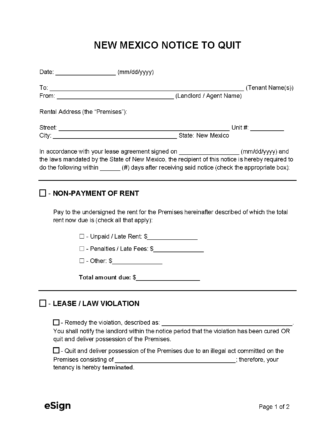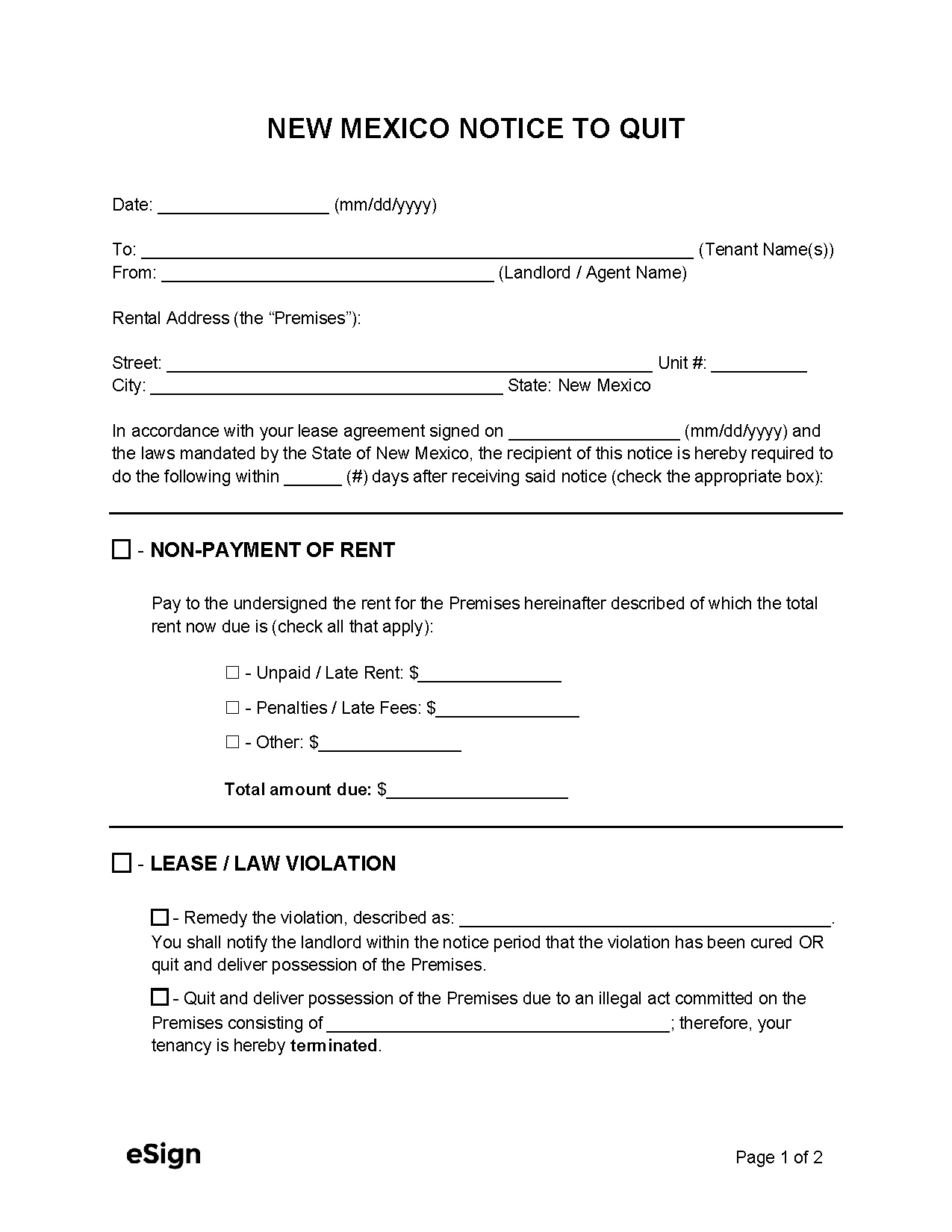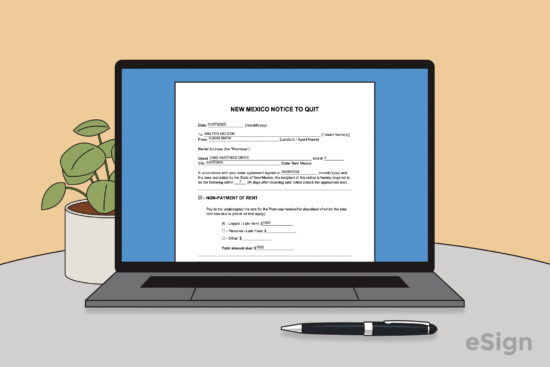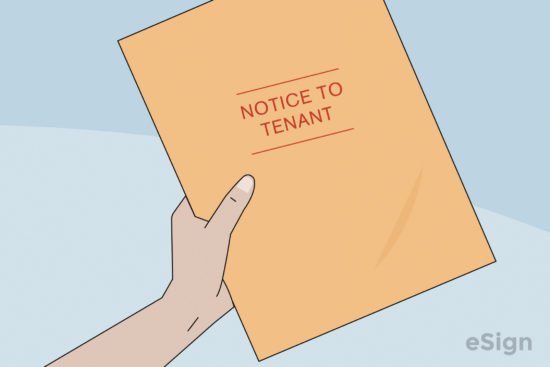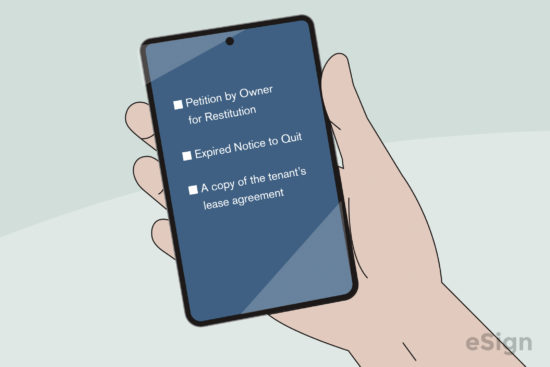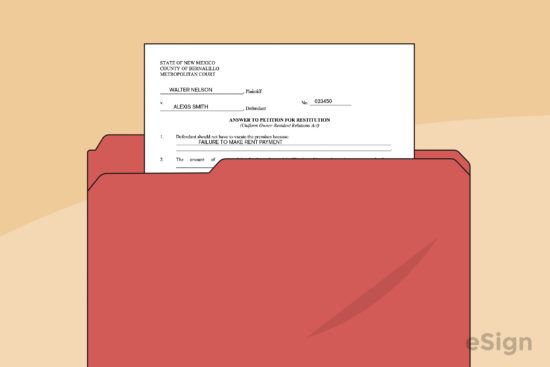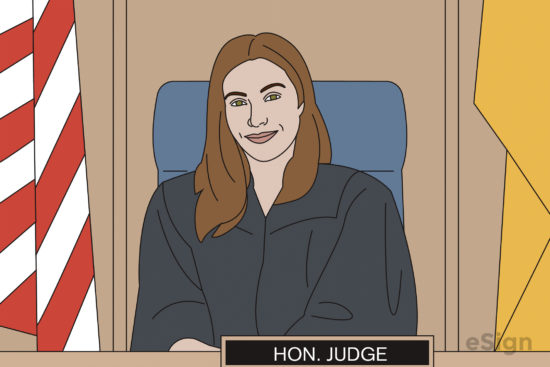Eviction Notices: By Type (4)
3-Day Notice to Quit | Non-Payment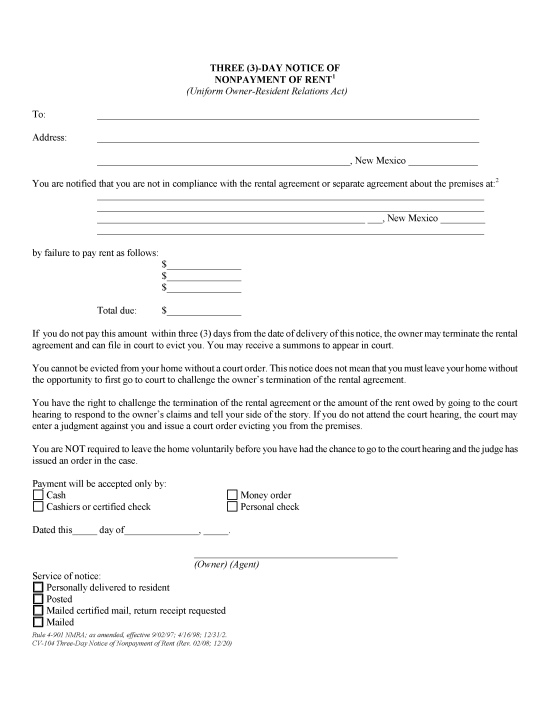 – Given to a tenant who has not paid their rent to inform them that they have three days to pay or vacate. – Given to a tenant who has not paid their rent to inform them that they have three days to pay or vacate.
Download: PDF |
7-Day Notice to Quit | Lease Violation – Used when a tenant has broken the terms of their lease. For first-time notices, the tenant may fix their violations in the seven-day notice period to avoid eviction. – Used when a tenant has broken the terms of their lease. For first-time notices, the tenant may fix their violations in the seven-day notice period to avoid eviction.
Download: PDF |
30-Day Notice to Quit | Month-to-Month Lease – Terminates a month-to-month tenancy with 30 days’ notice. – Terminates a month-to-month tenancy with 30 days’ notice.
Download: PDF |
3-Day Notice to Quit | Substantial Violation of Lease – For serious lease violations and illegal activity, the tenant is given no opportunity for recourse and must move out within three days. – For serious lease violations and illegal activity, the tenant is given no opportunity for recourse and must move out within three days.
Download: PDF |
Notice Requirements
How to Evict a Tenant in New Mexico
Step 1 – Draft Notice to Quit
To begin the eviction process, the landlord must draft a written notice explaining the reason the tenant is being evicted and the number of days they have to comply before legal action is taken.
Step 2 – Serve Notice
The notice to quit must be delivered to the tenant by hand, posted on the property, or sent by mail. After the notice is served, the landlord will need to fill out and sign the service portion of their copy.
Step 3 – Open Eviction Case
The landlord can file for eviction if the tenant doesn’t comply with the notice to quit.
To open a case, the landlord must complete a Petition by Owner for Restitution, attach the expired notice to quit, and file them with the clerk’s office of the District, Metropolitan, or Magistrate court associated with the property’s location.
The clerk will prepare a service packet for the landlord, the Petition, an Answer to Petition for Restitution form, and Summons and Notice of Trial.
Step 4 – Service Packet
After receiving the service packet, the landlord must arrange to have it delivered to the tenant at least seven days before the trial date. Service must be completed by the County Sheriff, a private process server, or an adult who is not involved with the case.
The service packet must be given directly to the tenant or a member of the household who is at least 15, or posted on the premises with an additional copy sent by certified mail.
The server must complete the return of service portion of the and file it with the court.
Step 5 – Tenant’s Answer
If the tenant chooses to contest the landlord’s petition, they will need to fill out the Answer and file it with the court before the deadline indicated in the Summons (or the trial date, whichever is sooner).
Step 6 – Attend Trial
On the date of the trial, both parties will present their case. The judge will then make a ruling and sign a Judgment for Restitution in the prevailing party’s favor.
In the event that either party does not appear in court, the court will most likely rule in favor of the person in attendance. If the landlord prevails, the judge will set an eviction date in the Judgment
Step 7 – Writ of Restitution
If the tenant does not vacate the rental property by the eviction date, the landlord can request a Writ of Restitution from the court clerk.
Once obtained, this form must be given to the county sheriff who will complete the eviction process by serving the Writ and, if necessary, physically remove the tenant.
Court Forms + Resources
Forms
- Petition by Owner for Restitution (Form 4-904)
- Signed by: Landlord
- Petition by Landlord for Termination of Tenancy (Form 4-923A)
- Signed by: Landlord
- Summons and Notice of Trial on Petition for Writ of Restitution (Form 4-905)
- Signed by: Process Server and Notary Public
- Answer to Petition for Restitution (Form 4-907)
- Signed by: Tenant
- Judgment for Restitution (Form 4-909)
- Signed by: Judge
- Writ of Restitution (Form 4-913/4-914)
- Signed by: Judge/Designee and Sheriff/Deputy
Resources
